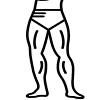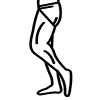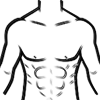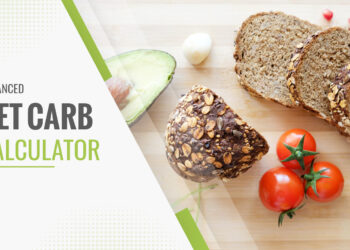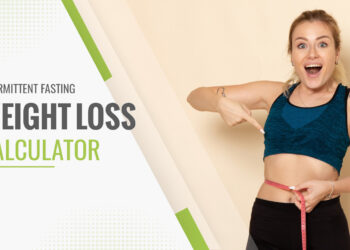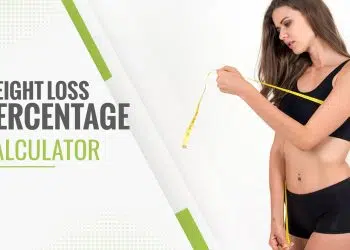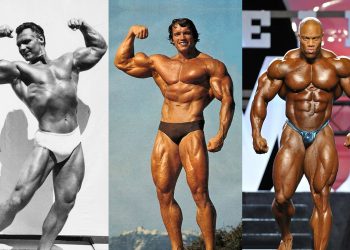Use the Grecian Ideal calculator to estimate your muscular potential and ideal muscle group proportions. Learn how to look aesthetic.
Have you ever wondered how big your arms can get naturally or steroid-free? (most guys have). While there are many factors that determine someone’s ability to pack on lean muscle mass, the size of your joints can tell a lot about your genetic potential.
The Grecian ideal calculator offers an approximation of ideal muscle proportions based on your wrist circumference. But whether or not your biceps could ever be 2.5x the size of your wrists, it doesn’t hurt to aim for the moon.
We’re also realistic in that you may never reach the suggested measurements.
Keep reading to learn about this awesome tool.
What Is The Grecian Ideal Calculator and How Does It Work?
Decent muscle mass, symmetry, proportion, and leanness are all essential components of an aesthetically pleasing physique.
Level Up Your Fitness: Join our 💪 strong community in Fitness Volt Newsletter. Get daily inspiration, expert-backed workouts, nutrition tips, the latest in strength sports, and the support you need to reach your goals. Subscribe for free!
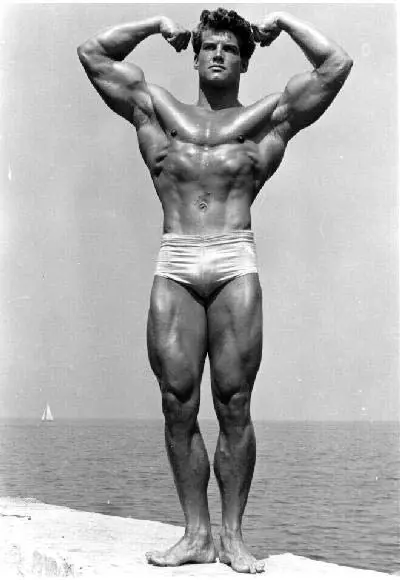
The ancient Greeks had the right idea, or rather their own ideal of the perfect male body characterized by wider shoulders in comparison to waist size, solid overall muscle development and balance, and low enough body fat (likely low double-digit).
Eugen Sandow, also known as the “Father of Modern” Bodybuilding was believed to have attained something close enough to the Greek-god-like image (not far off if you’ve seen pics of the legend). Sandow also adopted the term “Grecian Ideal” to describe the highly sought-after look.
Try This Legendary Eugen Sandow Workout Inspired By The Father Of Modern Bodybuilding
The multi-talented bodybuilder and strength athlete believed that the Greeks’ had a superior knowledge of the body’s form and development. His goal physique was also highly inspired by the proportions of Greek statues such as Hercules Farnese, Dying Gaul, and Artemision Bronze.
He’d even go as far as to visit museums and measure the proportions of the statues in an effort to devise his blueprint (Grecian Ideal).
While Eugen Sandow will always have an important place in history, we’ve also seen many legends and icons with awe-inspiring physiques throughout the years.
Bodybuilders like Steve Reeves, Reg Park, Arnold Schwarzenegger, Frank Zane, Lee Labrada, and Serge Nubret to name a few have also embodied what could certainly be considered an ideal level of muscular development.
Although, the lean, and fit “athletic physique” seems to get most of the votes by women for what they think looks most attractive and desirable.
How To Use The Grecian Ideal Calculator
This is undoubtedly the simplest calculator that you’ll find on our website. There are just three steps to see your genetic potential estimate.
Step 1: Choose your preferred unit of measurement: Imperial (lbs, hours, and minutes) or metric (kilograms, hours, and minutes).
Step 2: Enter your wrist size.
Step 3: Hit Calculate!
Now for the exciting part. The calculator will provide your ideal measurements for each body part and you can then see how you currently match up.
The calculator estimates measurements for the following muscle groups.
- Chest
- Waist
- Hip
- Biceps
- Forearm
- Thigh
- Calve
- Neck
How To Measure Each Body Part
So now you get to pull out your soft measuring tape and see how your biceps, calves, and other areas measure up. But not so fast. We know some of you may be tempted to get a quick pump before flexing your biceps.

All of your measurements should ideally be taken in the morning and before you’ve eaten or had anything to drink, and before a workout. It should also be done when you are not carb-loading to most accurately reflect your arm size on a daily basis.
Wrist
A common recommendation is to measure the non-dominant wrist.
To do this, turn your palm up, open your hand, and measure the circumference of the area between the bony protrusion of your wrist and your hand.
Chest
To get an accurate measurement of your chest which is a little more challenging than other body parts, have someone wrap the tape around the part of your chest that sticks out the most, and then around your shoulder blades and under the armpits.
Take a normal breath and relax to get the best measurement.
Waist
Your waist measurement should be taken right above the belly button but below the ribcage.
Hip
This is the largest part of your buttocks below the waist. Ideally, have someone do it for you but you can get a good measurement on your own.
Biceps
While the biceps are just the two-headed muscle on the front of your upper arms, there’s no way to only measure this muscle and so this really means the entire arm including the triceps too.
For the best measurement, flex your arm and wrap the tape over the highest point of your bicep and straight down and around your triceps. Measure both arms.
Forearm
Flex your forearm and measure at the meatiest part.
Thigh / Upper leg
Flex your upper leg and measure at the biggest part.
Calve
Point your toe down and flex your calve then measure the thickest part.
Neck
Stand up straight and have someone measure the thickest part of your neck. Although, it’s not hard to do it yourself.
Golden Ratio/Adonis Index
It’s no secret that a broad set of shoulders are a universal symbol of strength and a male trait that women find desirable and attractive. But paired with a large waist and bulging belly, this look doesn’t quite have the same appeal.
The Golden ratio or Adonis Index addresses this exact point by describing what is believed to be the perfect shoulder to waist ratio – 1:1.618.
That’s right, those numbers at the end of the previous sentence didn’t end up there by mistake. It’s apparently a pretty big deal.
But it goes much further than analyzing the perfect balance between the shoulders and waist. 1.618 is an ancient and unique mathematical concept that’s been studied by many of the greatest minds in history from Euclid to Pythagoras in ancient Greece to Leonardo of Pisa in Italy.
The Golden Ratio is found in nature such as leaf growth patterns, geometry, mathematics, architecture, art, financial markets, music, and human shape, and proportions. It’s essentially a combination of various elements put together in the most aesthetically pleasing way possible.
The Grecian ideal measurements are described below.
- Flexed arm: 2.5x larger than non-dominant wrist
- Flexed calves: Same size as flexed arms
- Shoulders: 1.618x larger than waist
- Chest: 6.5x larger than non-dominant wrist
- Upper leg: 1.75x larger than knee
While the standards may not be the same for everyone, these measurements are pretty spot on regarding what we’d imagine an aesthetic physique to look like.
While the calculator does not provide all of the above-listed body part measurements and probably isn’t 100% spot-on in comparison, it can give you a rough idea of ideal proportions.
The good thing though, is that you don’t have to try and do any math if your goal is to get your body to match these measurements and overall proportions or see where you are right now.
The calculator uses a formula to do this for you.
So let’s say you have a 7-inch wrist. Your estimated proportions according to the Grecian Ideal calculator will look like the following.
- Chest – 46 inches
- Waist – 32 inches
- Hip – 39 inches
- Biceps – 17 inches
- Forearm – 13 inches
- Thigh – 24 inches
- Calve – 16 inches
- Neck – 17 inches
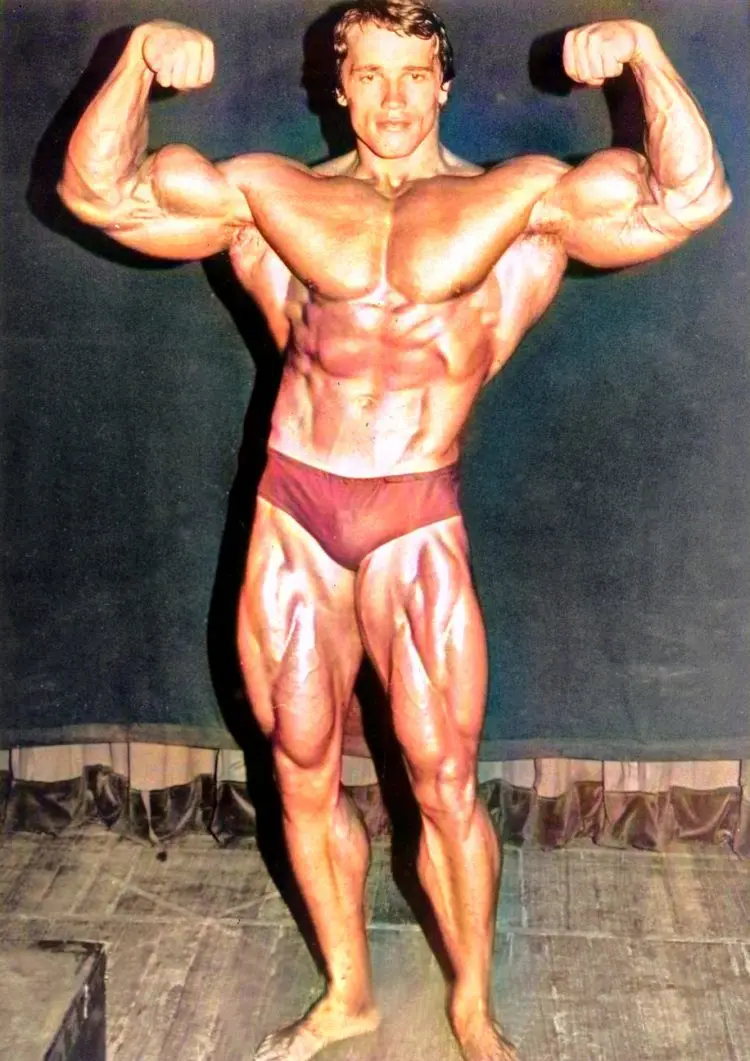
But What About Body Fat Percentage?
Without taking into consideration body fat percentage, the perfect proportions may become less ideal. For example, higher body fat will also mean a larger midsection in comparison to other body parts for some people.
Body fat can have a significant effect on proportions.
Try this cutting plan to lose fat and maintain muscle.
Although, there was really no way to measure this in the 1800s and so there are no specifics as to the ideal fat percentage range.
There were also no performance-enhancing drugs back then and they didn’t have the diet and training knowledge that we have today.
Level Up Your Fitness: Join our 💪 strong community in Fitness Volt Newsletter. Get daily inspiration, expert-backed workouts, nutrition tips, the latest in strength sports, and the support you need to reach your goals. Subscribe for free!
This is another reason to take your results with a grain of salt.
But typically, you want to have a lower body fat percentage for the most accurate muscle size and waist measurements/proportions estimate. Think about it, someone may have 17-inch arms but 25% body fat. But what about the person with 17-inch arms and 10% body fat?
The latter is much more impressive and brag-worthy!
For men, 8-10% body fat seems to be a good, healthy range for impressively visible muscle mass.
But with that being said, we don’t all have the same goals and we don’t see why it wouldn’t be perfectly fine to have 15% body fat while also wanting to be proportionate at the same time.
Try our body fat calculator.
Doesn’t Height and Weight Matter?
It sure does. The calculator only considers wrist size but what about height/limb length and weight. After all, these two factors do play a huge role in muscle size and proportions.
Use our BMI calculator to determine whether you may be underweight or overweight for your height.
Typically, a taller person can carry more muscle mass overall even if they don’t look as big. However, if you think about it, taller many times translates to larger bone size although this certainly is not always the case.
Limb length can also affect proportions too as not everyone has the same length body parts.
The Grecian Ideal calculator also falls short here as it doesn’t consider height and limb length.
Casey Butt, PH.D., actually came up with a calculator/formula that does factor in height, along with body fat percentage, and wrist and ankle measurements. There’s a good chance you’ve come across this handy tool during your journey to making gains.
It’s arguably more accurate in determining genetic potential while remaining at a lower body fat percentage.
Genetics still play a massive role in muscular potential though and no calculator can predict these things a hundred percent. So while the Grecian Ideal tool or Casey Butt’s calculator tells you that natural, lean 18-inch arms are attainable, it may not be realistic.
That’s OK though, no matter your genetics, anyone can build impressive arms and look aesthetic overall.
How Many Years of Training Does It Take To Reach Your Full Genetic Potential?
This is a question that is almost impossible to answer because it’s dependent on factors such as genetics, proper training and nutrition, consistency, physical and mental health, and daily habits in general (sleep, hydration, etc).
Typically, most people don’t max out their gains, and even so, there’s arguably always room to make progress, even if minuscule.
Genetics
Have you ever known someone who has heaps of muscle with no prior training or maybe they’re a newbie and already have your dream physique after only six months in the gym?
Or heck, maybe you’re that guy… or gal.
Well, these are the types who typically reach their genetic potential the fastest so long as they are consistent with everything.
However, each body type, whether you’re an ectomorph, mesomorph, or endomorph, has its own advantages.
Take our quiz to find your body type and learn about what makes each one different and unique.
It’s also important to note that we’re referring to natural lifters. Using performance-enhancing drugs (which we’re not condoning the use of) would likely help someone reach what would be their genetic potential much faster.
Also read: Top 5 Bodybuilders With The Best Genetics Ever
Proper training and nutrition
Are you continually adding more weight, pushing out more reps, or using methods to continually implement progressive overload?
If the answer is no, and assuming your nutrition habits are decent, then don’t expect to reach your genetic potential as quickly as you could.
Many beginners tend to do the same routines using the same weights for too long and as a result, they don’t gain much muscle and eventually realize (if they even realize it all) that they’ve been spinning their wheels.
Related: The Best Workout Program For Natural Bodybuilders
But on the other side of the token, many will overtrain and neglect good nutritional habits on top of that.
Resistance training stimulates a strength and hypertrophic response and your food intake is responsible for the repair and growth process.
Also read: Real-World Eating for More Muscle
Consistency
This one doesn’t need much explanation. If you’re not training several days per week, sufficiently stimulating each muscle group, eating enough protein, and doing all the right things, then you’re prolonging the process.
As with anything, you must be committed and consistent for best results.
Physical and mental health
Any issues that affect your ability to consistently train, eat, and focus to work toward your goals are going to impede your progress.
Suffering from injuries, illnesses, stress, depression, and anxiety or even having deficiencies and hormonal imbalances can push your gains back months and even years.
Of course, for some things, like a broken rib, for example, you have to just wait it out. But for others, it’s entirely possible to find solutions whether through therapy, lifestyle changes, medications, etc.
Daily habits
An extension of the previous point, there are daily habits that everyone should do to ensure they are setting themselves up for long-term success… that’s right, “long-term” success.
If you don’t have some sort of health routine or a regime that keeps you on track mentally and physically, then don’t expect to see results on a week-to-week basis.
Things like getting enough sleep, watching your alcohol consumption, and drinking enough water can make a massive difference in how you feel and subsequently, your choices.
Can You Gain A Lot More Muscle Than What The Calculator Estimates?
The calculator is by no means 100% accurate. In fact, your wrist size doesn’t tell the whole story.
It may help to aim for an aesthetic and proportional physique but again, the above factors can affect just how much muscle you ultimately pack on. That may mean more or less muscle relative to the calculator estimations.
Not everyone has the same genetics or the ability to develop muscle groups to the same degree.
For example, if two people have the same size wrists and similar body fat but one has better leg genetics, they will develop more muscle in their legs.
It’s also important to not let any formula or calculator discourage you from working as hard as you can to develop your body to the maximum. It’s many times possible to achieve more than you may have imagined you ever could.
Natural Vs. Enhanced Measurements
While we may have hinted at this earlier, the calculator is most accurate for natural lifters. While we’re not suggesting that we condone the use of performance-enhancing substances (although we aren’t condemning it either), you are much less limited regarding the size of muscles and leanness.
Legends like Eugen Sandow, George Hackenschmidt (where the hack squat got its name), and Otto Arco built impressive physiques steroid-free. They also didn’t have the knowledge we have today and for that, you can’t help but be incredibly impressed by what they’ve achieved naturally.
More Calculators
Also try out our many other calculator tools:
- BMI (Body Mass Index) Calculator
- Target Heart Rate Calculator
- BMR Calculator
- Weight Loss Calculator
- Time To Burn Calories Calculator
- Calorie Deficit Calculator
- Protein Calculator
- TDEE Calculator
- Body Fat US Navy Calculator
- Macronutrient Calculator
Build Your Greek God Bod!
Whether you’ve already surpassed your estimated potential or you want something to aim for, the Grecian Ideal calculator is an interesting, yet useful tool.
While it may not be 100% accurate, that’d be near impossible anyway. There are so many factors that determine your gains potential and proportions so have fun with it and see how close you can get to the measurements if you haven’t already surpassed them!



